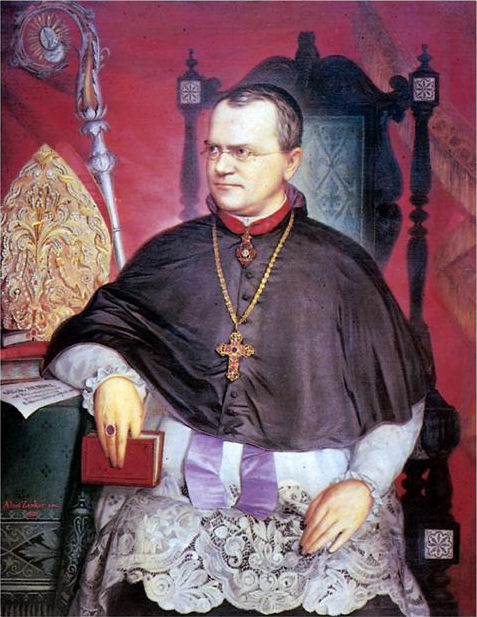
Did Mendel "cheat" ?
Analysis
of
Mendel's data has led to speculation about the accuracy and
completeness of his reported results, and a perennial
question, Did Mendel Cheat?
(1) Statistical analysis of the ratios reported in Mendel's 1866 paper suggest they are "too good:" they conform more closely to the predicted 3:1 ratio than would be expected given the number of observations. This has led to suggestions that Mendel selectively presented only those data that best supported his hypothesis, or even fabricated the data outright. An alternative explanation is that Mendel may have observed ratios close to 3:1 in early counts, and thereafter continued counting until he felt confident that genuine 3:1 ratios had been obtained. Researchers nowadays would pre-determine the number of seeds to be counted in each experiment, but such statistical sophistication was not available in the the 1860s.
(2) Mendel worked with seven genes, and Pisum has seven pairs of chromosomes. It is highly improbable that seven randomly-chosen genes would each occur on a separate chromosome. Dihybrid crosses involving genes on the same chromosome would have shown linkage, which would have been unexplainable by Mendel's rules. [Remember that chromosomes had not yet been observed in the 1860s]. Therefore, it is concluded, he must have thrown out some dihybrid results that didn't fit his rules.
In fact, the seven gene loci map to only six chromosomes, and the two on the same chromosome are on opposite sides of the centromere, so they do not show linkage disequilibrium. As there are (7)(7-1)/2 = 21 possible dihybrid crosses, and Mendel reported results from only a few of these (not including the linked pair), there is no reason to doubt the accuracy of his dihybrid results.
(1) Statistical analysis of the ratios reported in Mendel's 1866 paper suggest they are "too good:" they conform more closely to the predicted 3:1 ratio than would be expected given the number of observations. This has led to suggestions that Mendel selectively presented only those data that best supported his hypothesis, or even fabricated the data outright. An alternative explanation is that Mendel may have observed ratios close to 3:1 in early counts, and thereafter continued counting until he felt confident that genuine 3:1 ratios had been obtained. Researchers nowadays would pre-determine the number of seeds to be counted in each experiment, but such statistical sophistication was not available in the the 1860s.
(2) Mendel worked with seven genes, and Pisum has seven pairs of chromosomes. It is highly improbable that seven randomly-chosen genes would each occur on a separate chromosome. Dihybrid crosses involving genes on the same chromosome would have shown linkage, which would have been unexplainable by Mendel's rules. [Remember that chromosomes had not yet been observed in the 1860s]. Therefore, it is concluded, he must have thrown out some dihybrid results that didn't fit his rules.
In fact, the seven gene loci map to only six chromosomes, and the two on the same chromosome are on opposite sides of the centromere, so they do not show linkage disequilibrium. As there are (7)(7-1)/2 = 21 possible dihybrid crosses, and Mendel reported results from only a few of these (not including the linked pair), there is no reason to doubt the accuracy of his dihybrid results.